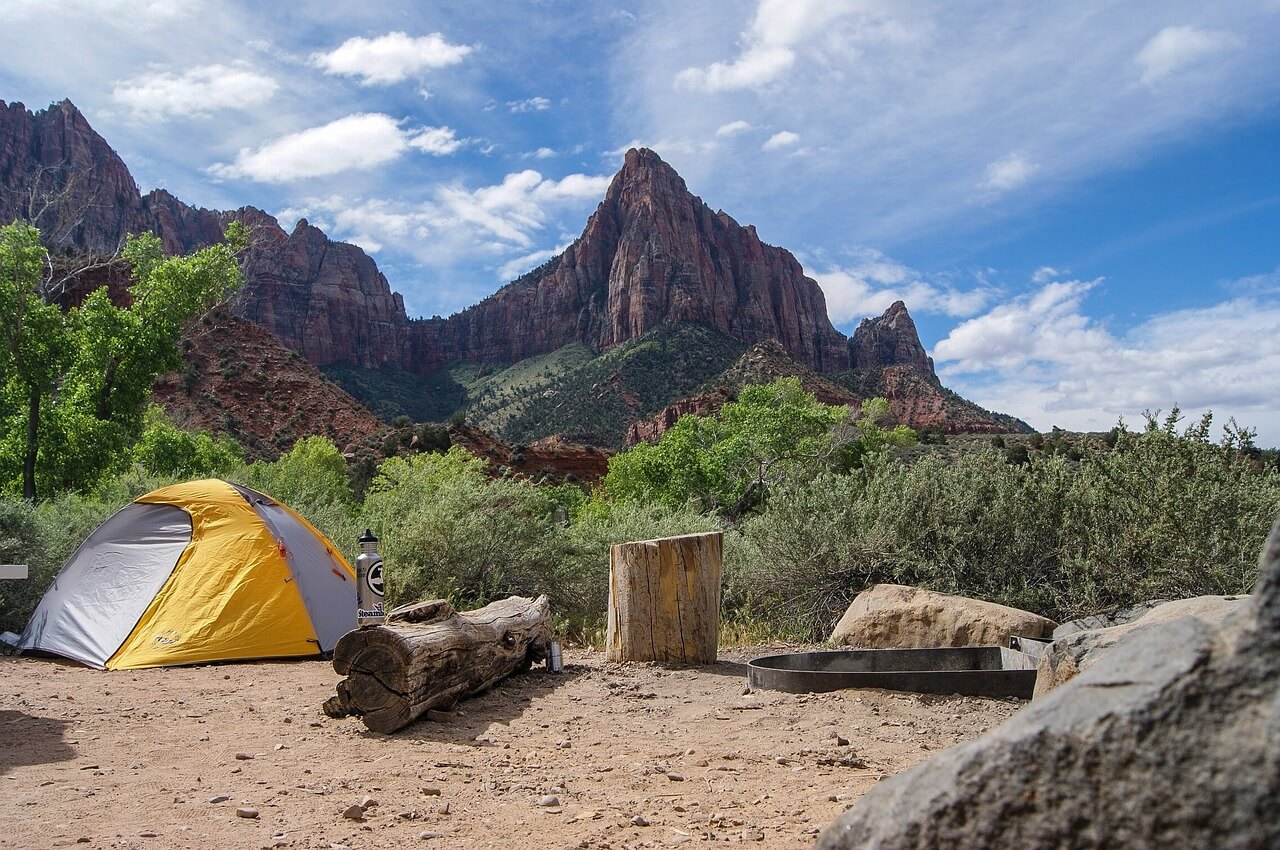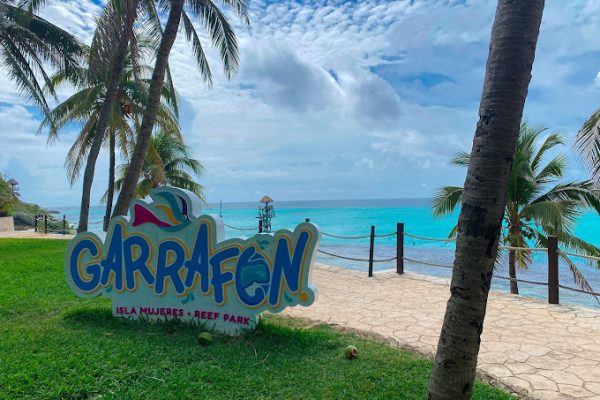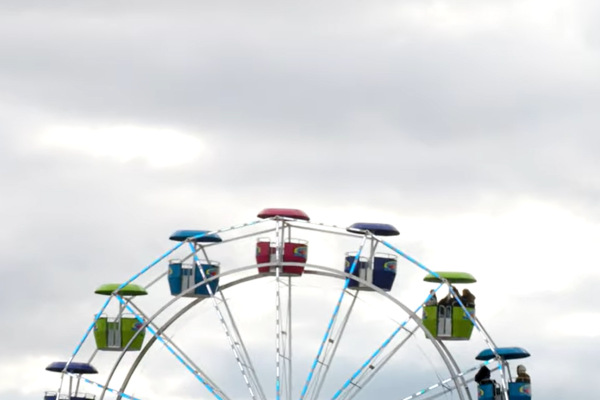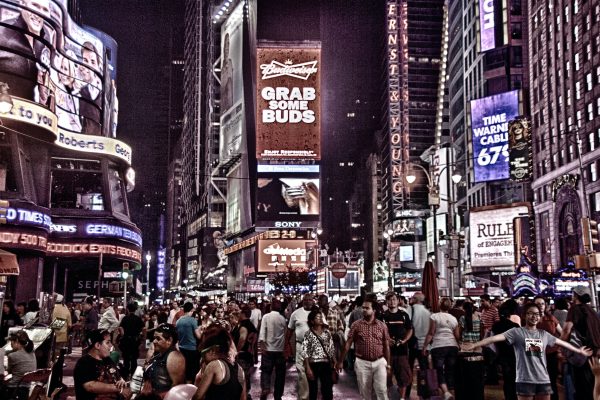Let’s discuss what are the best aussie campsite to visit in 2020. Looking for somewhere beautiful to bunk down? Walk-in, drive-in or boat-in, among forest, on the beach, or up in the mountains, we bring you the decisive list of must-visit campsites from around the country. Make sure to experience each of these at least once in your lifetime.
Campsites are like lighthouses. They guide our recollections, casting light on plot-turning cruxes in a journey’s narrative, and they’re also refuges in our earth-skimming migrations, places where food, kinship and rest regenerate our waning engine.
They are riotously diverse but one characteristic they all share is that, even if only momentarily, they are home. The journey is the real destination, particularly on multi-day hikes, but it’s human nature to want the campsite to offer something more than just respite – a revelation, perhaps?
They can be situated almost anywhere and might be needed at any time. Perhaps darkness is about to drape itself over you before your intended destination materializes. Perhaps a monster storm has ripped the fun out of progressing any further that afternoon. Perhaps, before the mind, the body has decided it’s time to clock off. Or perhaps — and this is the best-case scenario — the surroundings are so compelling, so irresistible, they demand more time, immersion and contemplation.
Here are ten of the best from around Australia.
Table of Contents
NEWLANDS CASCADES
Franklin-Gordon Wild Rivers National Park, Tasmania
There is an upside and a downside. This campsite, barricaded by impenetrable rainforest on the Franklin River, boasts an immense limestone overhang, so no tent is required. The trick is, you need to have journeyed down the Franklin for at least four to five days to get here, courtesy of a rafting company.
Opposite is Shower Cliff Cavern, its recesses lush with ferns, moss, limestone straws and cave spiders. The price you pay for the river, ravine and cavern views (particularly covetable from penthouse suite tiered ledges) is lots of muscle-draining paddling and portage. Australia’s best campsite?
NADGEE RIVER BY NADGEE BEACH
Nadgee Nature Reserve, New South Wales
Wow. If you are looking for glamourpuss in a campsite, this piece of paradise nails it. It levitates just above a stretch of river sweeping out of the Nadgee wilderness in southern NSW, where it meets the sand of Nadgee Beach, enfolded in the arms of defiant old banksias. It is on the quite incredible Nadgee-Cape Howe Wilderness Walk and it is definitely worth manipulating your itinerary so you can luxuriate in, not just
pass quickly through, its charisma.
BLAIR HUT
Alpine National Park, Victoria
Calm, peaceful and verdant. Blair Hut is an old cattleman’s ‘port-in-a-storm’, situated by the Kiewa River West Branch. It is nestled in a narrow valley between Mt Feathertop to the west, and the Bogong High Plains to the east. I reached it after the climb up Feathertop and a descent down the bitterly testing Diamantina Spur (a 4WD track also gives close access).
Surrounded by tall gums that gossip and lullaby through the night, the thickly grassed area is a decadent pleasure for de-booted, unshackled feet. Abundant birdlife flits, fossicks and feeds by the river which, I suspect, is also occupied by platypuses.
ST MARY INLET
Fitzgerald River National Park, Western Australia
This campsite is remote; at least seven hours driving from Perth. The biological hotspot that is the Fitzgerald River National Park (it is a UNESCO-recognized Biosphere Reserve), with its vast catalogue of plant and animal species, many of which are endemic to the area, is augmented by its beautiful white sand beaches, coastal walks and the opportunity to spot southern right whales. The campsite is set just behind a mesmerizingly beautiful beach which runs one way to the nearby Point Ann, with a protected cove for relatively safe swimming, to the distant Point Charles. Between the two points (and a little beyond) is the lovely 31km return Mamang Trail. It follows the coastline (inland a little) and features arresting views of Lake Nameless and Fitzgerald Inlet, as well as extensive dune systems, the ocean and the hinterland.
Access off the highway is down a longish gravel road, safe for sensible two-wheel drivers.
COOINBIL HUT
Kisciuszko National Park, New South Wales
Tucked up in the tree line, looking down on the saucer-shaped and
treeless but thickly tussocked Long Plain – where the headwaters of the Murrumbidgee
begin their transformation from trickle into torrent – this is soul country. A restored grazier’s hut gives the site its name. It features horse yards, helpful for the
cookies who, each summer, bring up their horses to ride the plains and bush just like their forebears did when sheep and cattle were once permitted to graze here. You
can ride, walk and mountain bike in any direction. The Australian Alps Walking Track is nearby, as is the icily (literally) gorgeous Blue Waterholes with its striking Clarke and Nichols Gorge walks. Yarrangobilly Caves is not far away, either, adding another
dimension to the experience.
Cooinbil is down a longish gravel road safe for prudent two-wheel drivers.
SEAL CREEK
Croajingolong National Park, Victoria
Accessible only by foot, Seal Creek campsite is less recognized than some of its brethren on the spectacular Wilderness Coast Walk in Victoria’s Gippsland. There isn’t much space here, but its situation is peerless (well, except for those peers on this list of course…). Park your tent in the wind-protecting scrub behind the beach’s western end, then sit yourself down and gaze out through the undergrowth-framed ocean – life doesn’t get any better. The creek sidles up behind the beach, which is book-ended by stoic, colourful and jagged cliffs.
POINT ERIC
South West National Park, Tasmania
Assuming you start your experience of the South Coast Track after being deposited at Melaleuca by a 10-seater aircraft, Point Eric is most adventurers’ first night stopover. On a walk packed with terrific campsites (e.g. Surprise Bay, South Cape Rivulet and the off-piste Louisa Bay; the much vaunted Osmiridium Beach site is comparatively over-hyped), this one will well and truly steal your heart. It’s secreted into the eastern armpit of Pt Eric, which is itself a small headland in the middle of the grand Cox Bight, thus protecting it from the dominant westerlies. The beach unfurls before you, rockpools thrive with starfish and swathes of bull kelp, and trees lean and sway over the beach in a sinuous dance. Walk-in (or boat-by-ocean-in) only.
BIG BEND
Carnarvon National Park, Queensland
Situated deep up the back of Queensland’s Carnarvon Gorge, Big Bend is the first campsite on the looped six-day Carnarvon Great Walk. Another purely walk-in only camp, to get here you will have journeyed 10km up the pale sandstone-walled gorge and no doubt had many a diversion to experience the fascinating caves, Aboriginal art galleries and mini-gorges on the way. Big Bend has a simultaneously expansive and cosy feel. Sitting next to Carnarvon Creek as it meanders and murmurs its way past the campsite, and the massive stooping curvature of Big Bend’s wall, it has a toilet, water tank and picnic tables. Another stunning characteristic is the adjacent Boowinda Gorge. This gorge is almost a tunnel, with 40m high sides and large rounded basalt rocks on the gorge’s floor.
You can easily imagine this being created out of the Dreamtime by a large serpent, twisting and turning, carving its way through this ancient landscape.
CONTO
Leeuwin Naturaliste National Park, Western Australia
Okay, I admit it, this is the only listed campsite I haven’t stayed at, but I’d love to! Situated on a hill behind the Indian Ocean, you are safe from howling westerlies as the peppermint scrub is thick, just the right height and swaddles you comfortingly.
Since I visited it’s had a massive upgrade with schmick barbecues, tables and toilets. Conto has three primary, closely situated attractions: coves and beaches (dangerous and not to be taken lightly); the Boranup Karri Forest with its leviathan, humbling trees you navigate through to get here (the road is gravel but two-wheel drivable); and its positioning on the 130km Cape to Cape Walk, running between Capes Naturaliste and Leeuwin. The walk’s section from Conto to Prevelly (about 16km) is magnificent, particularly if undertaken in spring when wildflowers are rife. It is an incredibly diverse section of the C2C and one of Australia’s best day walks.
SUMMER FALLS
Conondale National Park, Queensland
This is the final camp on the four-day 55km Conondale Range Great Walk. It’s walk-in only, though with platform seats, untreated drinking water and toilet. It’s next to its namesake falls and its cavernous, dramatic gorge. Brush box and white mahogany dominate the surrounding wet sclerophyll forest, while flooded gums, black wattle and tree ferns are prevalent on this vegetation-thick, tree-tunnel-like and thoroughly
enchanting rainforest trek.
How to Judge a Campsite?
Besides offering an appealing setting or vista, the most brilliant campsites tend to offer the following features:
- Trees. To quote Richard Powers in his sprawling nature novel, Overstory, Buddha proclaims a tree to be “a wondrous thing that shelters, feeds and protects all living things”. Trees also possess a great and varied aesthetic value: the sight and smell of them, the sounds they provide and the way they support animal life. The wood-wide web is indeed a real, not just a metaphorical, thing; trees and other vegetation are connected to and communicate with and protect each other.
• Water. Only after compiling this list did I realize each of the ten campsites are adjacent to a creek, ocean or river – and sometimes more than one of these! Water returns adults into the blessedly wonderful and unencumbered world of children. I’ve enjoyed watching this lack of self-consciousness it instils so many times; from dam building to boat racing to horse watering and more. Fire, water and leaves (three channels on bush TV): lyrical and sensual, each manage to hypnotize, pull us into their presence, switch us off from our normal range of thinking and magic us into reverie, renewing our energy
and equilibrium. There might me some campsites, where you will find hard water, so don’t forget to carry necessary tools to make hard water soft.
• A point of difference. That generally means there is a diverting activity, natural feature or special experience that exists at or adjacent to the campsite. Or it may be
something else; a special, hard-to-define spirit; a je ne sais quoi. That could be an association with a positive or emotionally significant memory from a previous trip — which is a reminder that everyone’s list of top 10 campsites will ultimately be different!





One Reply to “Best Aussie Campsites to Visit in 2020”